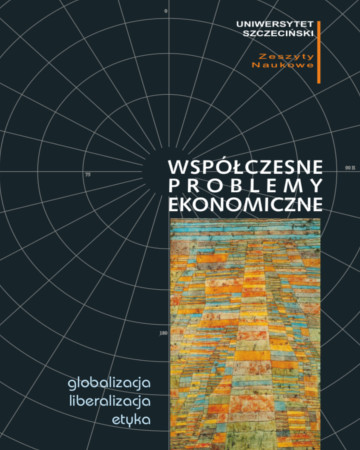
ISSN: 2081-9579
eISSN: 2353-2815
OAI
DOI: 10.18276/wpe.2015.11-01


Issue archive /
nr 11 (2015)
Wzrost gospodarczy a możliwości aplikacji zależności przestrzennych – prawo Verdoorna
(Economic growth with spatial effects – the Verdoorn’s law)
| Authors: |
Joanna
Górna
Wydział Nauk Ekonomicznych i Zarządzania (Katedra Ekonometrii i Statystyki) Uniwersytetu Mikołaja Kopernika w Toruniu Karolina Górna Wydział Nauk Ekonomicznych i Zarządzania (Katedra Ekonometrii i Statystyki) Uniwersytetu Mikołaja Kopernika w Toruniu |
| Keywords: | economic growth spatial Durbin model spatial error model spatial autoregressive model Verdoorn’s law |
| Data publikacji całości: | 2015 |
| Page range: | 11 (9-19) |
Abstract
Regardless many years of studies of economic growth this matter is still current and often undertaken by economists, economic geographers and regional scientists. The issue strictly connected to that subject is disparity of individual regions’ levels of development. This indicates a necessity of implication of the spatial dependencies during modelspecification. Increase of productivity in particular region has undisputed influence on level of economic growth. The Verdoorn’s law presents the relationship between the growth of output (GDP) and the growth of productivity. Thanks to its form it is possible to incorporate spatial effects or externalities, so changes of rate of productivity growth can be explained by factors situated in neighboring regions. This paper presents Verdoorn’s law with spatial effects. Following models will be used: spatial autoregressive model, spatial error model and spatial Durbin model. Spatial range of the study are 8 European Union countries: Czech Republic, Estonia, Lithuania, Latvia, Slovakia, Slovenia, Hungary. Investigated period is 2001–2011.
Download file
Article file
Bibliography
| 1. | Anselin L., An Introduction to Spatial Regression Analysis in R, University of Illinois, Urbana–Champaign 2003. |
| 2. | Barro R.J., Sala-i-Martin X., Economic Growth, The MIT Press, Cambridge 2003. |
| 3. | Bernat A., Does Manufacturing Matter? A Spatial Econometric View of Kaldor’s Laws’, „Journal of Regional Science” 1996, vol. 36. |
| 4. | Ekonometria przestrzenna. Metody i modele analizy danych przestrzennych, red. B. Suchecki, C.H. Beck, Warszawa. |
| 5. | Ekonomia rozwoju, red. B. Fiedor, K. Kociszewski, Wydawnictwo Naukowe Uniwersytetu Ekonomicznego we Wrocławiu, Wrocław 2010. |
| 6. | Fingleton B., Regional Economic Growth and Covergence: Insights from a Spatial Econometric Perspective, w: Advances in Spatial Econometrics, red. L. Anselin, R. Florax, S. Rey, Springer-Verlag, Berlin 2004. |
| 7. | Finlgeton B., Lopez-Bazo E., Empirical Growth Models with Spatial Effects, „Papers in Regional Science” 2006, vol. 85 (2). |
| 8. | Kaldor N., Causes of the Slow Growth in the United Kingdom, Cambridge University Press, Cambridge 1966. |
| 9. | Lesage J.P., Fischer M.M., Spatial Growth Regressions: Model Specification, Estimation and Interpretation, „Spatial Economic Analysis” 2008, vol. 3, no. 3. |
| 10. | McCombie J. S. L., Thrilwall A. P., Economic Growth and the Balance of Payments Constraint, Palgrave Macmillan, Cambridge 1994. |
| 11. | Rey S.J., Montouri B.D., US Regional Income Convergence: A Spatial Econometric Perspective,„Regional Studies” 1999, vol. 33 (2). |
| 12. | Romer P.M., Increasing Returns and Long-run Growth, „The Journal of Political Economy” 1986, vol. 94 (5). |
| 13. | Verdoorn P.J., Verdoorn’s Law in Retrospect: A Comment, „The Economic Journal” 1980, vol. 90. |